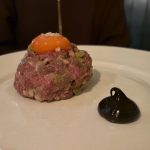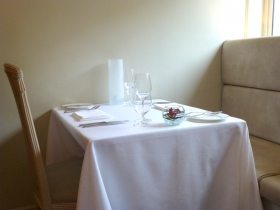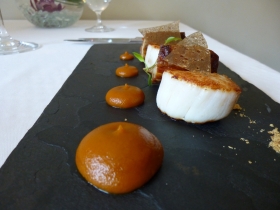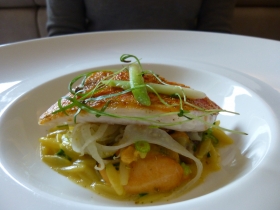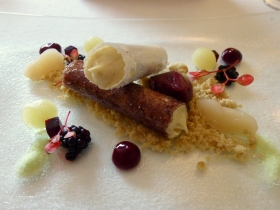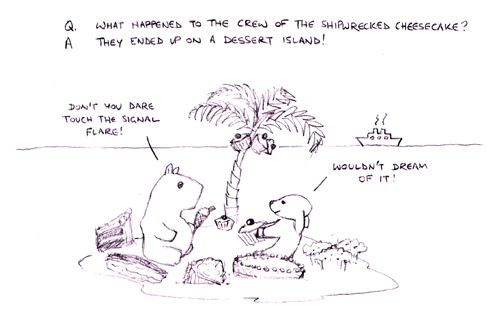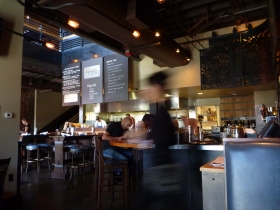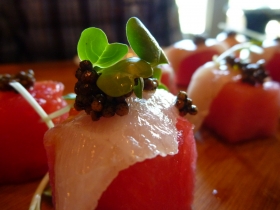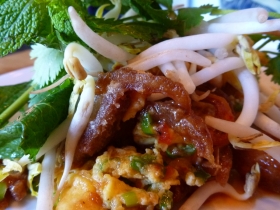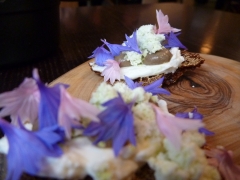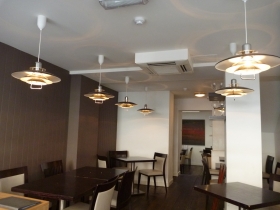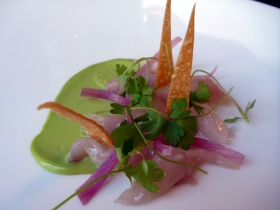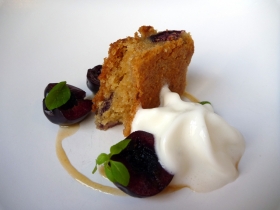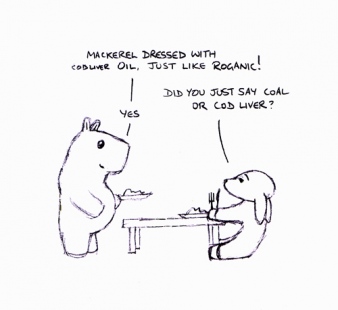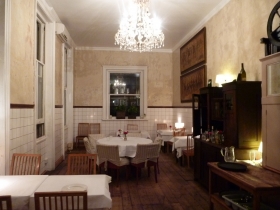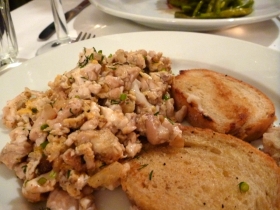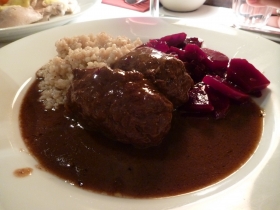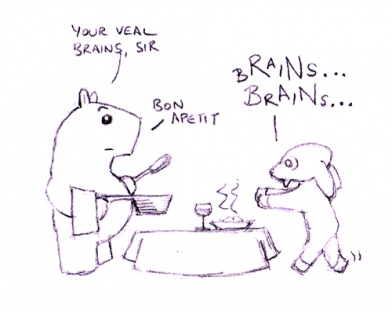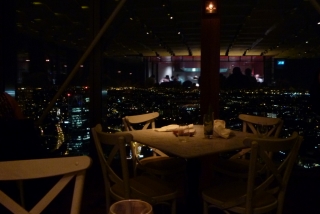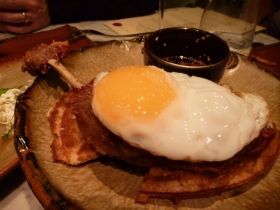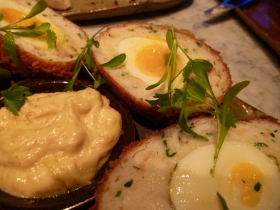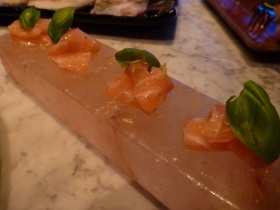Something trivial bugged me about our lunch at Lumière in Cheltenham. Bear with me, there is arithmetic. We arrived intending to have the lunch menu (£22 two courses, £26 three courses) but the a la carte menu was so full of intrigue that we splashed out (£42 two courses, £47 three courses). And of course we had dessert. Maureen decided she fancied one of the desserts from the lunch menu though.
When I got the bill I was surprised to find our meal set out as “1 x 3 course a la carte £47, 1 x 2 course a la carte £42, 1 x lunch dessert £8”. You see what I mean?
Oh come off it, you’re saying, don’t quibble over four quid! But as other bloggers have pointed out, our memories of a restaurant are (perhaps unfairly) formed by our final impression of the place, especially the bill. And given that my lunch at Lumière was essentially excellent, that little spot of unfairness on the bill (perhaps unfairly) sticks in my head. Some chef will have to explain to me why pairing a lunch menu dessert with an a la carte lunch should double its cost?
We did have a delicious lunch, though. While studying the menu we enjoyed pork crackling that dissolved with a salty-sweet fizzle on the tongue, and tiny savoury scones slathered with a truffled cream cheese. I’d have cheerfully demolished a plate of those.
My starter was a lesson in how to keep scallops interesting. The scallops were perfect, with great caramelisation. They were accompanied with generous blobs of puree richly spiced with anise and orange, with delicate crisps of cumin caramel, and with pieces of salty pork belly cooked down to scrunchy. Scallops want punch, and that’s what they get here. Maureen’s starter was essentially an elegant riff on paella; a fishy piece of mullet, juicy mussels and cockles, on saffron orzo. Jolly tasty but nothing especially bouncy or exciting; I’d have really enjoyed it as a main course.
Maureen’s venison main course was essentially faultless. Too many times I choose venison and find myself wondering why I didn’t just pick the beef. This darling piece of deer was fantastic produce, a great reminder of why I really ought to pick venison more often. It melted, and yet had bite. The quince was excellent, the licquoric-y sauce done with just the right delicacy. I kept up my surf-and-turf theme for main course: halibut with oxtail arancini. Lovely piece of fish, very savoury oxtail arancini. The accompanying red cabbage was boldly spiced and brought the whole dish together, along with dark wine-red salsify and white pickled onions.
“Shipwrecked cheesecake” was the odd name of my dessert. It was very, very good though. Caramely tubes filled with a creamy custard that was not overtly sweet at all. No idea what cheese went into it! The accompanying cider gel was tart and very drunken, exactly capturing the kind of farmhouse cider that makes red-nosed west country folk exclaim “Oo-aaaar!” This along with the apple and blackberry textures made for a perfectly judged and not over-sweet pud. Maureen’s dessert was perhaps the least great dish of the day, a small glass cup filled with somewhat grainy chocolate crème brulee that had been jollied up with the addition of popping candy, served with marshmallows that had a powerful passionfruit flavour but were too dense. They were superfluous, except to make the dish look like a cup of hot chocolate, which shouldn’t really be an end in itself.
All in all, an excellent lunch with every dish bar one faultlessly executed. Service is friendly and relaxing, the dining room is smart, light and airy, though admittedly I’ll have blurred it in with a dozen other similar places within a month. The wine list is weighted towards the expensive, only two whites under £35. I think that at £47 for three courses a la carte the food is priced about right for the sheer quality.
Definitely a great choice if you’re looking for a fine meal in Cheltenham.
See? I’m not bitter about the bill.



